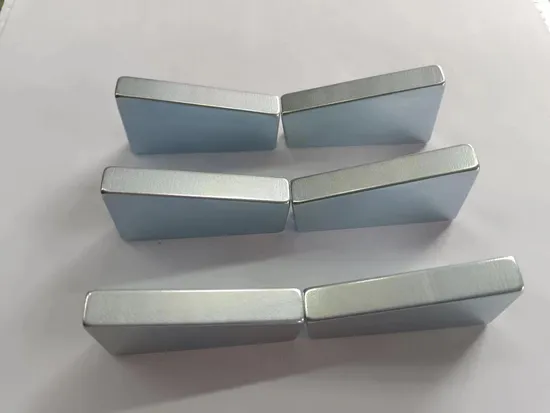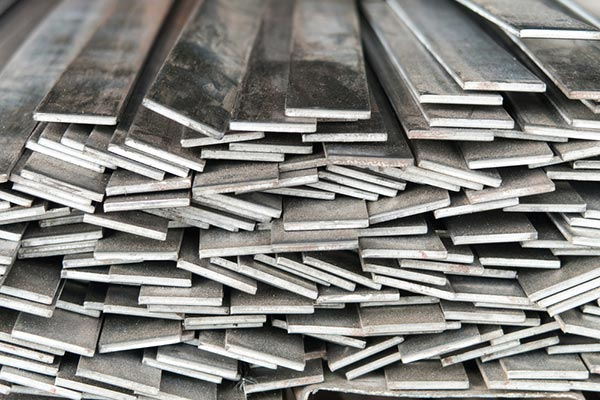Yes, galvanized steel is magnetic.
Here’s why it’s simple. Galvanized steel has a steel base that attracts magnets. A thin zinc coating covers this steel, but zinc isn’t magnetic. The steel underneath is strong enough that magnets stick right through the zinc layer.
What You’ll Learn
This guide covers everything you need to know. We’ll explain:
- Why the science makes it magnetic
- Whether different coating methods change magnetic strength
- Real uses for engineers, makers, and DIYers
- How to test galvanized steel magnetic properties with a basic magnet
Table of Contents
The Science Explained
Understanding why magnets stick to galvanized metal requires looking at two parts. The steel core and zinc coating behave very differently around magnets.
A Primer on Magnetism
Metals react to magnets in three ways. Each category behaves differently.
- Ferromagnetic: These metals strongly attract magnets and can become magnetized. Iron, nickel, and cobalt are the main examples. Steel falls into this group.
- Paramagnetic: These materials barely attract magnetic fields. The pull is so weak you usually can’t feel it without special tools. Aluminum and titanium work this way.
- Diamagnetic: These materials actually push away from magnetic fields slightly. For practical purposes, they’re non-magnetic. Zinc, copper, and gold behave like this.
Knowing these differences helps explain ferromagnetic materials and why they matter here.
The Steel Core
Most galvanized steel uses low-carbon steel as its base. This steel contains over 98% iron.
Iron is the most famous ferromagnetic material. Its atoms form regions called magnetic domains. When you bring a magnet close, these domains line up and create strong attraction.
This iron-rich core gives galvanized steel its magnetic power. The steel itself acts like a magnetic powerhouse underneath its coating.
The Zinc Coating
Galvanizing adds a protective zinc layer to steel. People often ask: is zinc coating magnetic? The answer is no.
Zinc is diamagnetic. It actually repels magnetic fields slightly instead of attracting them.
But here’s the key detail. The zinc coating is incredibly thin. Hot-dip galvanized coatings typically measure 45 to 85 micrometers. Electro-galvanized coatings are even thinner.
This layer is too thin to block the steel’s magnetic field. Think of it like thin paint on an iron block. The magnet sticks right through it.
The magnetic properties of steel vs zinc are completely different. But since steel makes up most of the material, its magnetic nature wins.
All Types of Galvanizing

Does the galvanizing method change magnetic strength? Many wonder if hot dip galvanized steel magnetic properties differ from electro-galvanized versions.
Hot-Dip vs. Electro-Galvanizing
Hot-Dip Galvanizing dips steel parts in molten zinc at 450°C (842°F). This creates a thick, durable coating with zinc-iron alloy layers bonded to the steel.
Electro-Galvanizing uses electrical current in a zinc solution to coat the steel. This method creates smoother, more precise coatings that are thinner but less robust than hot-dip versions.
Both processes give the same result. If you start with standard carbon steel, the galvanized product stays magnetic.
Neither galvanizing method changes the steel’s ferromagnetic core. Electrogalvanized steel magnetism matches its base metal exactly.
The Critical Factor
Here’s where confusion happens most. “Galvanized” only describes the zinc coating, not what’s underneath. The base metal determines magnetic behavior.
You can galvanize different metals. Their magnetic properties depend on what’s under the zinc.
Galvanized Product | Base Metal | Is it Magnetic? | Common Use Case |
Standard Galvanized Steel | Carbon Steel (Iron Alloy) | Yes | Construction, Fencing, HVAC ducts |
Galvanized Stainless Steel | Austenitic Stainless Steel (e.g., 304, 316) | No (Typically) | Marine hardware, architectural trim |
Galvanized Stainless Steel | Ferritic/Martensitic Stainless Steel (e.g., 430) | Yes | Kitchen appliances, automotive exhaust |
Galvanized Aluminum | Aluminum | No | Specialty roofing, lightweight panels |
This shows you can have non-magnetic galvanized sheet if the base material doesn’t attract magnets, like 304 stainless steel or aluminum.
Note something important about austenitic stainless steels (300 series). They’re non-magnetic when annealed due to their crystal structure. But they can become slightly magnetic through cold working like bending or forming.
When ordering materials, specify the base metal, not just the coating. The American Galvanizers Association provides detailed information about base metals used in galvanizing
Coating Thickness
Does thicker zinc coating weaken magnetic pull? Yes, but barely.
Thicker coatings, common in hot dip galvanized steel magnetic applications, can slightly reduce surface magnetic attraction compared to thin coatings or bare steel.
It’s like picking up a paperclip through one sheet of paper versus ten sheets. The magnetic pull weakens with distance but stays clearly present.
This effect doesn’t matter for 99% of uses. However, sensitive magnetic sensors or precision instruments requiring specific field strength might need to consider this slight reduction.
A Hands-On Guide
Testing materials yourself gives the clearest answers. This simple guide for testing metal for magnetism provides definitive results in seconds.
What You’ll Need
You only need a few common items.
- A simple magnet. Refrigerator magnets work, but stronger neodymium magnets give much clearer results.
- Known galvanized steel. Try galvanized nails, washers, metal studs, or HVAC ductwork.
- Known non-magnetic items for comparison. Aluminum cans, copper pipes, or plastic pieces work perfectly.
The Step-by-Step Test
- Safety First. Make sure metal pieces have no sharp edges or burrs. Wear gloves if needed.
- Establish a Baseline. Touch your magnet to the non-magnetic item like an aluminum can. Notice the complete lack of attraction. This is your non-magnetic control.
- Test the Galvanized Item. Slowly bring the magnet toward your galvanized steel surface.
- Observe the Attraction. Feel the force as the magnet snaps to the surface. Strong pull indicates ferromagnetic material.
- Slide Test. Once attached, try sliding the magnet across the metal surface. Note the resistance you feel. This friction confirms magnetic properties.
Interpreting Your Results
The physical feedback from this test is unmistakable.
A strong snap tells you everything. If the magnet jumps from short distance to the metal and holds firmly, you’ve confirmed ferromagnetic material. This is what you’ll see with over 99% of common galvanized steel products.
Weak or no pull means you’re dealing with different base metal. No attraction at all probably means galvanized aluminum or non-magnetic stainless steel. This check is crucial before assuming silver-colored metal is steel.
For definitive testing, especially when comparing steel types or checking weak magnetism, powerful magnets work best. We recommend small but strong Neodymium Block Magnet from our collection for clear, unambiguous results.
Practical Applications

Knowing that galvanized steel is magnetic affects real projects. This matters whether you’re designing complex systems or planning weekend DIY work.
For Engineers & Manufacturers
In industrial settings, galvanized steel’s magnetic properties serve as both tool and consideration.
Magnetic Sorting is common. Galvanized steel parts separate easily from non-magnetic materials like aluminum, stainless steel, or plastic using magnetic conveyors or separators on production lines.
For Sensor Actuation, galvanized steel pieces make cost-effective, durable targets for Hall effect sensors or reed switches in machinery. Their corrosion resistance and reliable magnetic signature work excellently.
Critical warning: Applications requiring non-magnetic but corrosion-resistant materials need careful specification. MRI rooms, sensitive electronics enclosures, or naval compass decks cannot use standard galvanized metal. You must specify exact base materials like galvanized 316 stainless steel or galvanized aluminum. This distinction is vital for performance and safety, as discussed in material selection resources like Engineering.com.
For DIY Enthusiasts
For hobbyists and crafters, galvanized steel sheeting’s magnetic nature creates exciting possibilities. It’s cheap, durable, rust-resistant magnetic canvas.
Perfect projects include:
- Custom magnetic knife racks or wall-mounted spice racks
- DIY magnetic bulletin boards, chore charts, or photo displays
- Workshop organization walls for hanging tools with magnets
The magnetic property lets you create functional, industrial-style pieces without separate magnetic backing. Many projects like this appear on sites like Instructables.
For these projects, magnet choice determines success. For holding heavier items like wrenches or hammers, consider our Countersunk Neodymium Magnets. They screw directly into wooden racks or frames, providing secure, flush finishes with immense holding power.
For Hardware Buyers
For sourcing agents and hardware shoppers, this knowledge prevents costly mistakes.
Key takeaway: never assume silver-colored, corrosion-resistant fasteners or sheets are non-magnetic. Many corrosion resistant magnetic metals exist. Galvanized steel is the most common.
Always do the simple magnet test described earlier if your application needs non-magnetic materials. This matters especially when buying hardware for sensitive electronic or navigational equipment on boats or in labs.
When sourcing materials, clarity is essential. If non-magnetic properties are required, purchase orders must be explicit. Specify exact base materials like 316 Stainless Steel bolts or Aluminum 6061 sheet rather than generic terms like galvanized fasteners.
Conclusion
Confident material choices start with understanding fundamental properties. Galvanized steel’s magnetic nature perfectly shows how simple attributes can have major practical consequences.
Key Takeaways
Here are the most important points.
- Galvanized Steel is Magnetic: The magnetism comes from iron in the steel core, not the non-magnetic zinc coating.
- The Base Metal is King: The metal under the zinc—carbon steel, stainless steel, or aluminum—determines magnetic properties.
- Always Test: When in doubt, simple magnet tests provide definitive answers. This quick check prevents costly project errors and ensures material suitability.
This knowledge is critical for following industry standards like those governing zinc coatings such as ASTM A123/A123M. These specify coating requirements but rely on purchasers to specify correct base steel.
You now have the knowledge to confidently answer is galvanized steel magnetic and select right materials for any project. Whether it involves magnetic attraction or requires its complete absence.
If your project needs high-performance magnets to work with galvanized steel or other applications, explore our extensive collection.
From versatile Pot Magnets for mounting to powerful blocks for industrial use, find the perfect magnetic solution at AQIIMagnet.
Facebook
Twitter
LinkedIn


